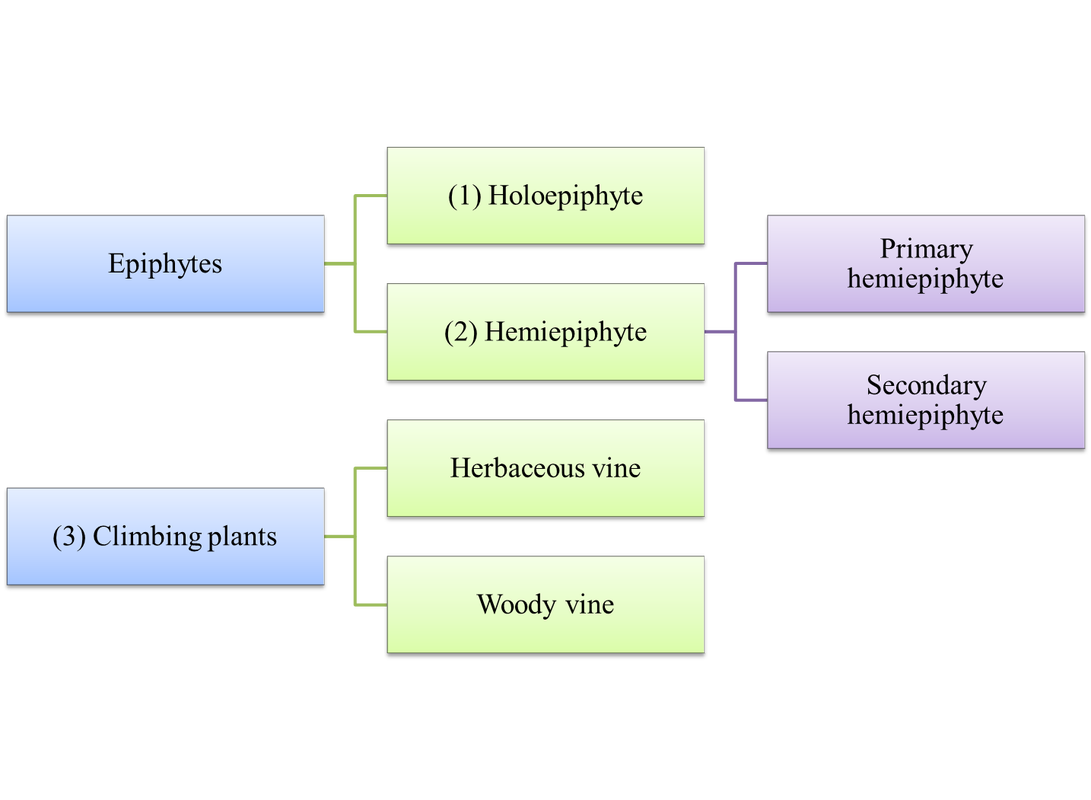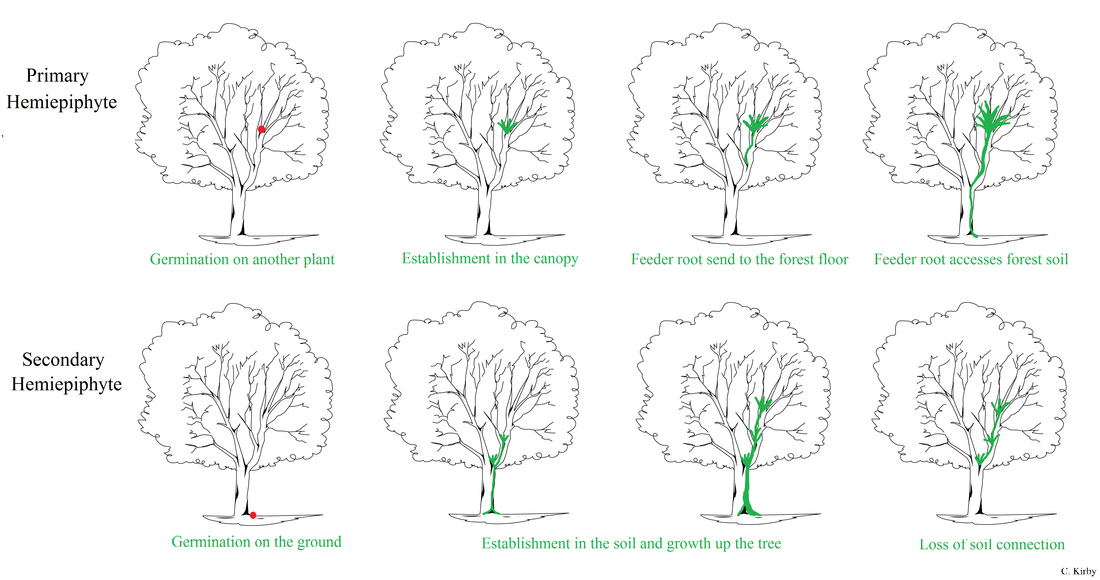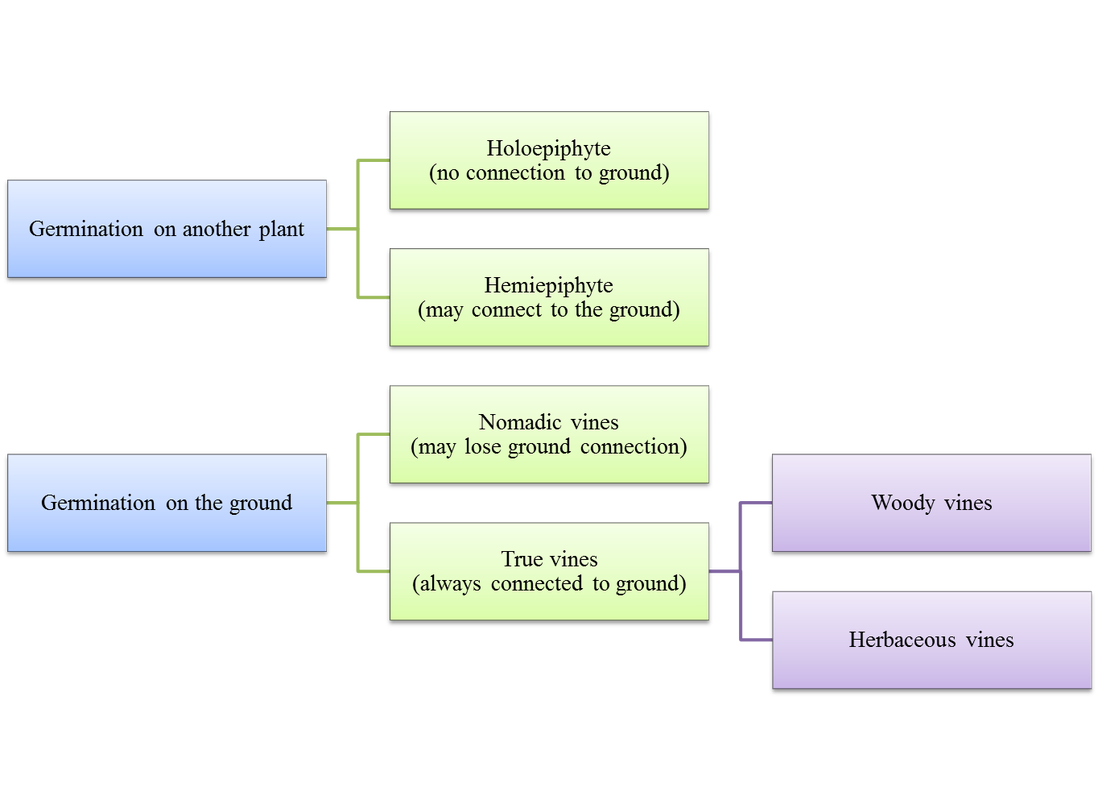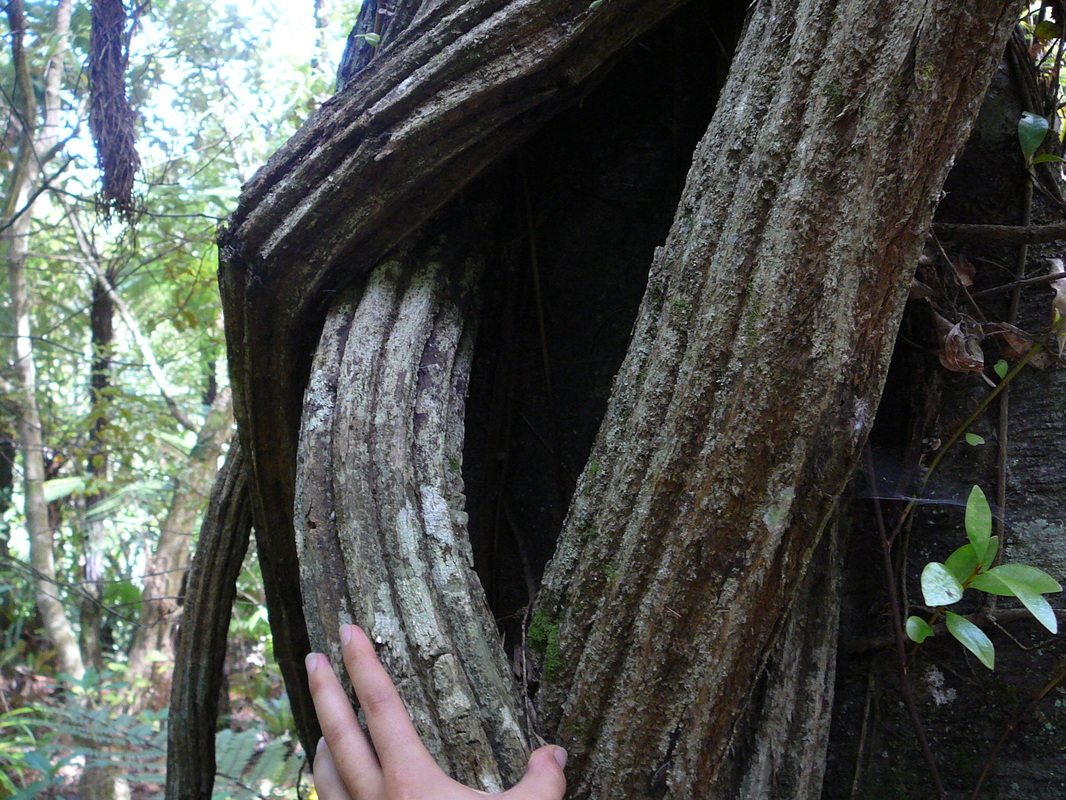The current classification of canopy plants typically has three main groups: (1) holoepiphytes; (2) hemiepiphytes; and (3) climbing plants. Holoepiphytes are those that germinate and complete their life cycle on other plants. Climbing plants are vines (also called lianas) that require the structural support of other plants to reach the canopy; these can be further defined as herbaceous or woody categories. Hemiepiphytes are plants that have a root connection with the forest floor at some stage in their life cycle and can be further differentiated into primary and secondary categories:
- Primary hemiepiphytes are plants that establish this connection to the ground after germinating in the canopy
- Secondary hemiepiphytes begin life on the ground, climb to the canopy and then lose their link with the ground.
This is how the current classifications relate to each other (please note that this is my interpretation):
As explained by Zotz (2013), there are multiple problems with the term ‘secondary hemiepiphyte’:
1. Inconsistent use of SH has resulted in ambiguous application of the term and confusion over which species fit in this group.
2. It is difficult to determine if any one species is a SH because although the main ground connection may be lost, adventitious roots can re-connect with the soil and these roots can be hard to find and trace.
3. The term implies a close relationship with primary hemiepiphytes when there are in fact significant functional differences between the two groups, including: the location of germination; the growth form; the source of water and nutrients; and the structural support mechanisms.
A solution:
Zotz (2013) proposes that the use of the term SH is discontinued and that all climbing plants which germinate on the ground and possibly lose parts of their ground connection are instead referred to as ‘nomadic vines’. This change would achieve the following clarification:
1. It should stop the ambiguous classification of canopy species and facilitate compatibility of data sets in higher-level studies. Also, the use of ‘primary’ with hemiepiphyte will be redundant and ‘hemiepiphyte’ will only refer to species that germinate on another plant and establish a connection with the forest floor.
2. There will no longer be an implied functional relationship between the primary and secondary hemiepiphytes but instead the similarity of SH with vines/lianas will be highlighted
3. Species that only sometimes lose their connection with forest soil will fit within ‘nomadic vines’. This new term can also accommodated the occasional germination of these species in the canopy.
This is how the proposed classifications relate to each other when based on the location of germination (please note that this is my interpretation):





 RSS Feed
RSS Feed
